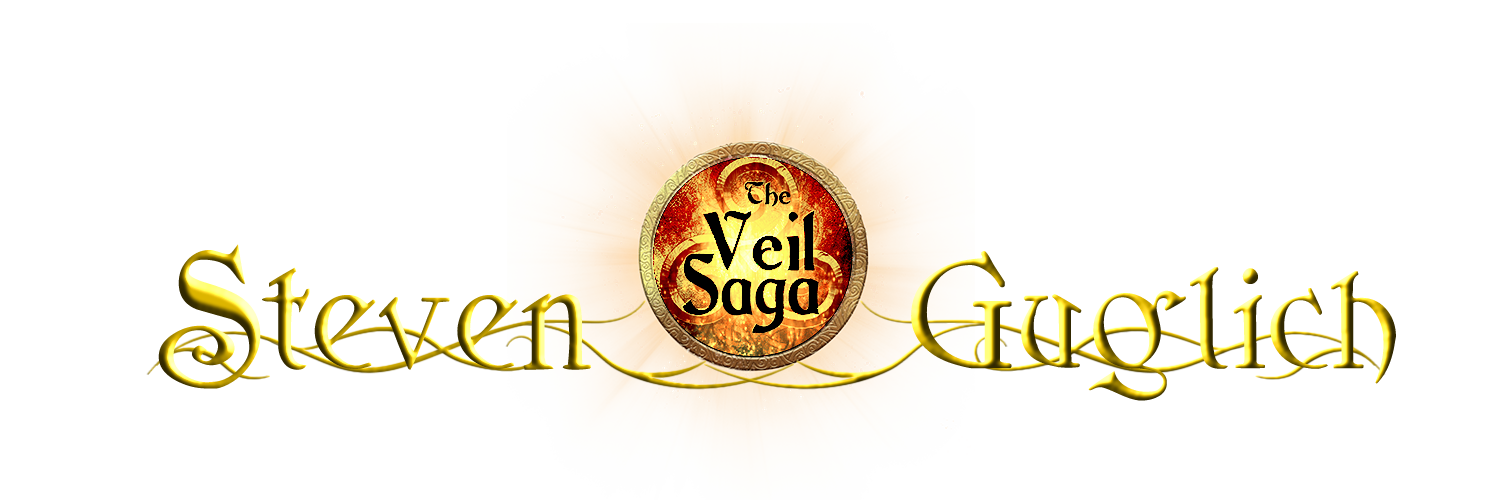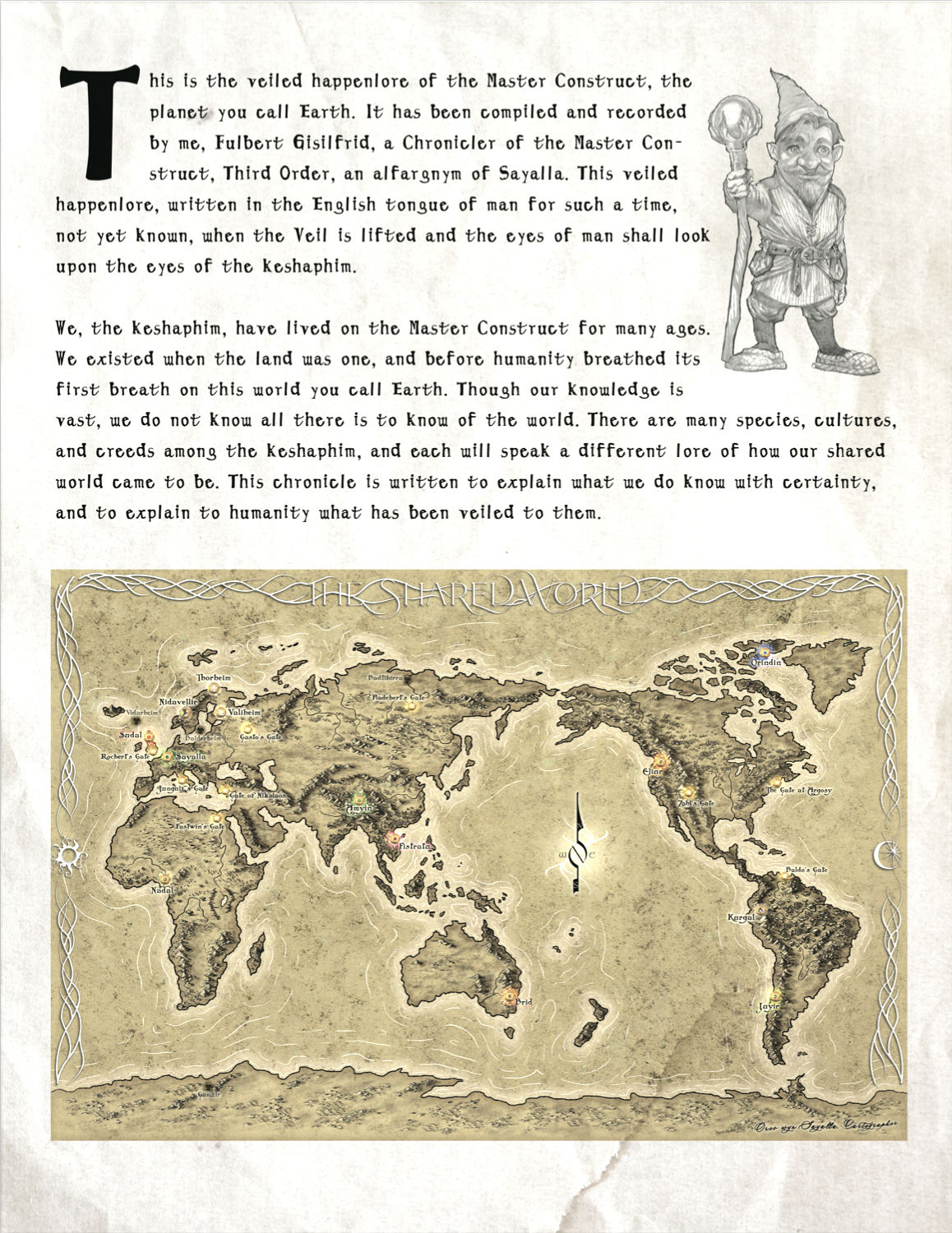The Koth
Not Your Ordinary Reptile Men
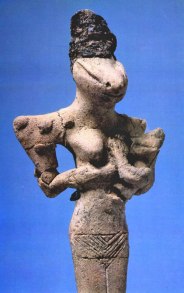
Ubaid Reptile People
Some of the strangest and most mysterious myths around the world pertain to humanoid reptile people or lizard men as they are sometimes called. There are myths and legends that date back several millennia, such as the mysterious statues of the Ubaid Reptile People. These strange statues are said to be over 7,000 years old and depict lizard-like beings.
In recent times there have been many reported sightings of large reptile-like creatures, some humanoid and some not. One of the most recent legends in our era is that of the Lizard Man of Scape Ore Swamp in South Carolina.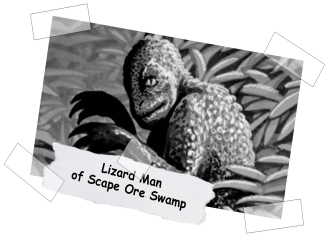
Then there are the myths of the majestic dragon that can be found in almost every culture, extinct and existing, around the world. The popularity of dragons is second to no other mythical creature. Dragon lore and legend has spurned the imagination of many storytellers, from the ancient Mesopotamians who penned the Enuma Elish and told of the great dragon-lion, Ushumgallu to that of Jacobus de Voragine’s telling of Saint George and the Dragon.
In modern times, no doubt, the popularity of dragons was elevated by J.R.R. Tolkien’s The Hobbit and the role-playing game, Dungeons & Dragons. Modern epic fantasy authors such as Richard Knack and Brian Rathbone have made a career featuring dragons.
Brian Rathbone, author of the Godsland Series is known for his dragon-inspired tweets. Some of his most recent include: “Brian has temporarily been eaten by dragons. He tastes terrible, so we’re hoping he’ll return soon.” and “Never try to jumpstart a sleeping dragon. Yelling, ‘Clear!’ doesn’t help. Trust me.”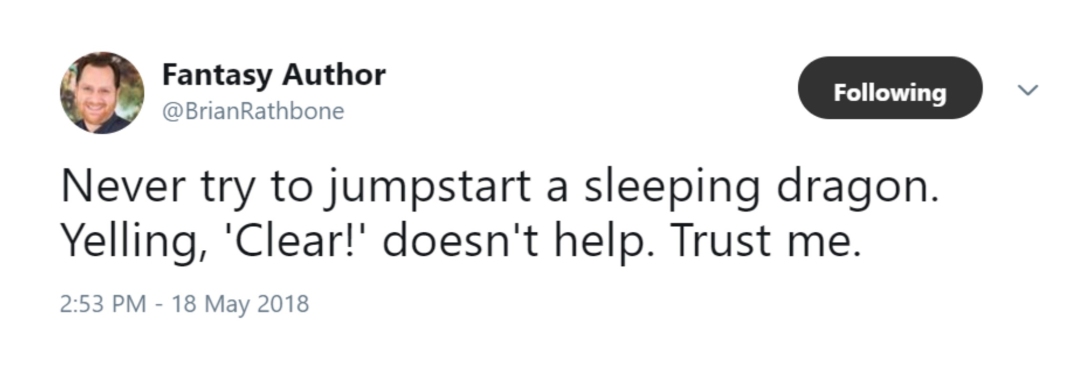
Brian discovered his love of dragons as a young man working on the family farm training racehorses. “I fell in love with reading fantasy partly because the worlds within often more closely resembled the world I lived in as opposed to the ‘real world.’” Brian said. “Many of the fantasy books I read were about communication between people and other creatures—especially dragons, which was a lot like what I did for a living. Convincing a horse to go where you want it to go and at the speed you want to go while surrounded by others attempting to do the same is more than a little challenging and nerve wracking. Animals have different ‘personalities’, and my experiences in the barn and on the track have inspired the behavior of horses, dragons, and other creatures in my books.”
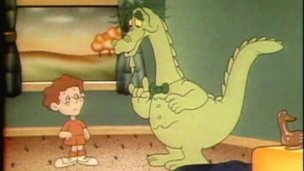 I remember my first encounter with dragons. Real dragons… not the Puff the Magic Dragon kind (not that there’s anything wrong with the Peter, Paul, and Mary classic or the cartoon based on it.) It was 1983, a friend had invited me to play Dungeons & Dragons with him and his brother. I had no idea what this game was about, but I remember the red book he handed me. This was Frank Mentzer’s Basic Dungeon & Dragon’s Player’s Manual and on the cover was Larry Ellmore’s “Ancient Red”; a fearsome winged creature of beauty and terror towering over a sword wielding Conan-like warrior.
I remember my first encounter with dragons. Real dragons… not the Puff the Magic Dragon kind (not that there’s anything wrong with the Peter, Paul, and Mary classic or the cartoon based on it.) It was 1983, a friend had invited me to play Dungeons & Dragons with him and his brother. I had no idea what this game was about, but I remember the red book he handed me. This was Frank Mentzer’s Basic Dungeon & Dragon’s Player’s Manual and on the cover was Larry Ellmore’s “Ancient Red”; a fearsome winged creature of beauty and terror towering over a sword wielding Conan-like warrior.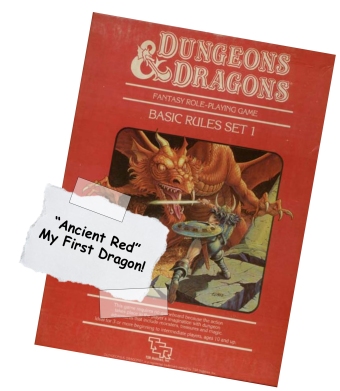 I stood there in awe and wide-eyed fascination wanting more. As I made my first ever D&D character, a magic user, all I could think about was how I was going to fight that dragon. As we played the game, I kept asking my friend’s brother when we were going to fight the dragon. To the dismay of my then twelve-year-old mind, I soon learned that only experienced players ever fought a dragon and lived to tell about it.
I stood there in awe and wide-eyed fascination wanting more. As I made my first ever D&D character, a magic user, all I could think about was how I was going to fight that dragon. As we played the game, I kept asking my friend’s brother when we were going to fight the dragon. To the dismay of my then twelve-year-old mind, I soon learned that only experienced players ever fought a dragon and lived to tell about it.
As I grew older the popularity of dragons grew with me. My dad started collecting dragon figurines and statues. More and more books started to feature dragons. They had become a big part of modern mythology and pop culture. As I began to think about the world of The Veil Saga I knew dragons would have to play some role in the story.
As I developed the secret history of the world, tying mythologies together and explaining mysterious phenomenon, dragons found their place in the world before man. They flew the ancient skies and battled with the likes of trolls, elves, dweorg, and goblins. Their fate was sealed in the final wars of these antediluvian peoples.
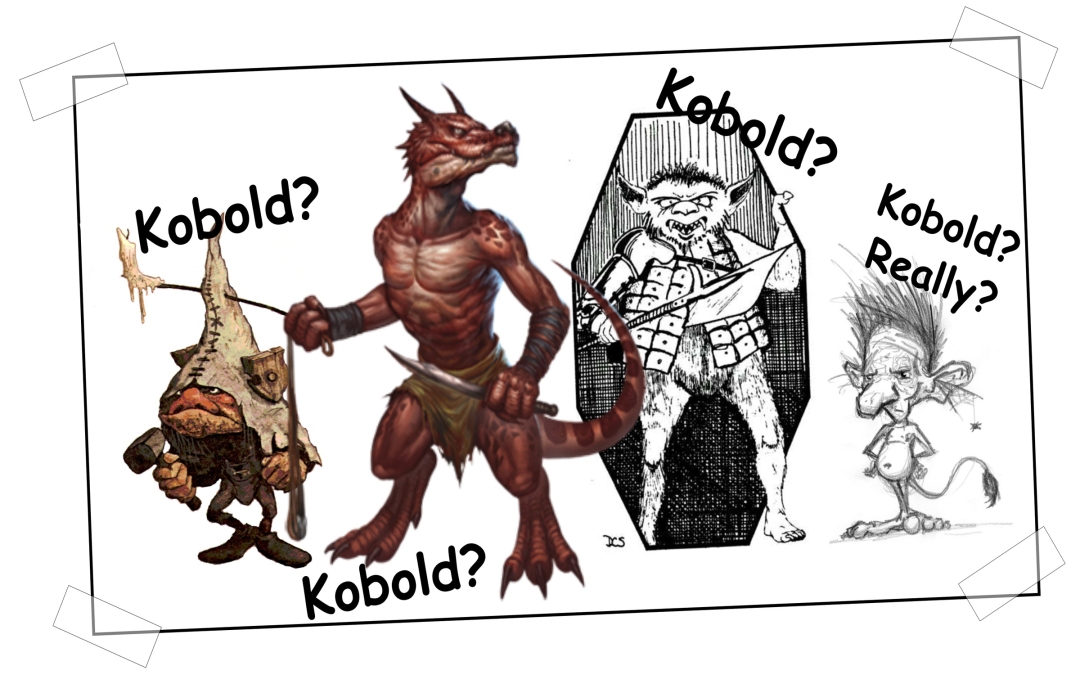 With dragons gone, I wanted to have some remnant of their existence. My initial thought was the kobold from my Dungeons & Dragons experience. At first the idea seemed perfect. In D&D, the kobold are a reptilian race of dragon descendants that serve dragons. My thought was, “What would the kobold do if dragons no longer existed?” I also liked the idea of using the kobold because I had remembered from my research on mythological and supernatural creatures, that kobold sightings were mentioned in Germanic mythology. This seemed perfect. However, as I continued my diligent research, I discovered that the kobold of myth and legend were nothing like the kobold in Dungeons & Dragons. In fact, the reptilian kobold of D&D were not based on any mythological creature. Only in Dungeons & Dragons (and now Pathfinder) will you find a reptilian race known as kobolds. I was stuck. The pieces didn’t fit. I couldn’t use the word kobold to describe the reptilian species found in The Veil Saga. That’s when I turned to my group of friends I call my Fantasy Consultants. I shot some ideas at them, and they helped me to run with the idea of a created hybrid species… not dragon… not reptile… but something else. And who better to create this reptilian hybrid then the despicable and twisted goblins.
With dragons gone, I wanted to have some remnant of their existence. My initial thought was the kobold from my Dungeons & Dragons experience. At first the idea seemed perfect. In D&D, the kobold are a reptilian race of dragon descendants that serve dragons. My thought was, “What would the kobold do if dragons no longer existed?” I also liked the idea of using the kobold because I had remembered from my research on mythological and supernatural creatures, that kobold sightings were mentioned in Germanic mythology. This seemed perfect. However, as I continued my diligent research, I discovered that the kobold of myth and legend were nothing like the kobold in Dungeons & Dragons. In fact, the reptilian kobold of D&D were not based on any mythological creature. Only in Dungeons & Dragons (and now Pathfinder) will you find a reptilian race known as kobolds. I was stuck. The pieces didn’t fit. I couldn’t use the word kobold to describe the reptilian species found in The Veil Saga. That’s when I turned to my group of friends I call my Fantasy Consultants. I shot some ideas at them, and they helped me to run with the idea of a created hybrid species… not dragon… not reptile… but something else. And who better to create this reptilian hybrid then the despicable and twisted goblins.
Proficient in “blood magic”, the goblins were the first to discover that an organism’s genetic makeup could be found in the blood. They did not understand DNA or genetics at first but after centuries of vile experimentation and magical alterations, they brought into this world creatures that they could control. The first of which were the wyvern, a twisted breed of magically manipulated genetically altered dragon that answered only to the goblin. The wyvern were used in war as flying mounts to gain strategic aerial superiority.
The goblins second creation was a more abominable creation combining the blood of dragons, elves, and goblins. The kobold was created for ground assault purposes. However, they proved to be too unpredictable and too hard to control so their use was discontinued. The goblins were not done. They continued to experiment in an effort to create a superior ground force that they could control. From the blood of dragons, elves, and antediluvian mesotherms, the goblins created the koth. Designed to be able to think on their own, but with a desire to serve, the koth became a devastating foe of the elves and dweorg. The crowning achievement in goblin creation, the koth were different in many ways. But what makes them different from all other creation are their blood stones. 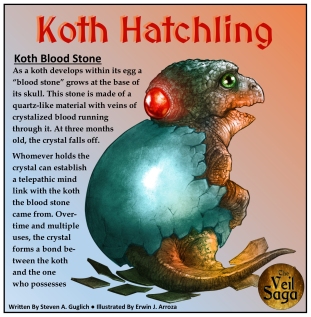 As a baby koth grows and develops within its egg a crystal forms at the base of its skull. This quartz-like crystal combines the unique DNA of the individual koth with an energy conducting crystal. When the hatchling emerges from its egg the crystal stays attached to the hatchling for the first three months. It then falls out, like a child losing a tooth, and the spot where the crystal once sat is eventually covered by scales as the koth grows.
As a baby koth grows and develops within its egg a crystal forms at the base of its skull. This quartz-like crystal combines the unique DNA of the individual koth with an energy conducting crystal. When the hatchling emerges from its egg the crystal stays attached to the hatchling for the first three months. It then falls out, like a child losing a tooth, and the spot where the crystal once sat is eventually covered by scales as the koth grows.
For the first fifteen years of a koth’s life, his koth stone is held by his parents. In the days before they gained their freedom, the koth had no choice in who they gave their koth stones to. It was taken by their goblin warlord and used to train them for battle.
Goblin warlords on the battlefield controlled squads of koth soldiers using a control band that allowed the warlord and his koth squad to work as one mind. This was a major turning point in the war. The allied armies of elves and dweorg were no match for the frenzied and fearsome koth.
The tides would turn again when elves in battle observed several koth wandering aimlessly on the battlefield. They deduced that when the goblin warlord was killed, the koth became docile. As this became more apparent, the goblins would flee, leaving their koth soldiers behind.
The elves were faced with a dilemma. What should they do with the koth? When not under the control of a goblin warlord, the koth were not hostile and were very compliant. Left to their own the koth seemed to wander aimlessly. The dweorg refused to have anything to do with them. The elves, however, felt pity on these creatures. They created a ward for them within their own cities and helped them to become productive members of society.
The koth have an innate desire to serve. Once given direction and a task, they flourish. This is where they have found their niche among the elves, alfargnym, and faun. They have taken the role of helpers, assisting elves and alfargnym in a variety of tasks. They are treated fairly and they feel most fulfilled when they serve. Koth now choose who they serve by freely giving their koth stone away.
In Piercing the Veilt: Book 1 of The Veil Saga, the main character, Jeremy, finds the concept of the koth quite unbelievable. It is difficult for him to imagine such a fearsome looking creature in the role of a servant. When Jeremy meets a koth named Birch he is given the opportunity to learn a little about the relationship between koth and those they serve.
“And you allow them to be your master?” Jeremy asked.
We do not use the term master. The elves taught us that the term master implied more than what we were. We serve. They receive our service. There is no human word for what this is. Those we serve are called pa’kach in the elven tongue.
“Pa’kach.” Jeremy repeated.
Yes. It means as I said. The koth serve. Pa’kach receive our service. In many ways it is a symbiotic relationship. We koth feel complete when we serve. And our pa’kach receive the help they need to do whatever it is they do.
You can read more about Jeremy and Birch in Piercing the Veil: Book 1 of The Veil Saga when it is published. In the meantime, what do you think of this unique race of fearsome servants? When was your first encounter with dragons and how did it influence your love of fantasy fiction?
